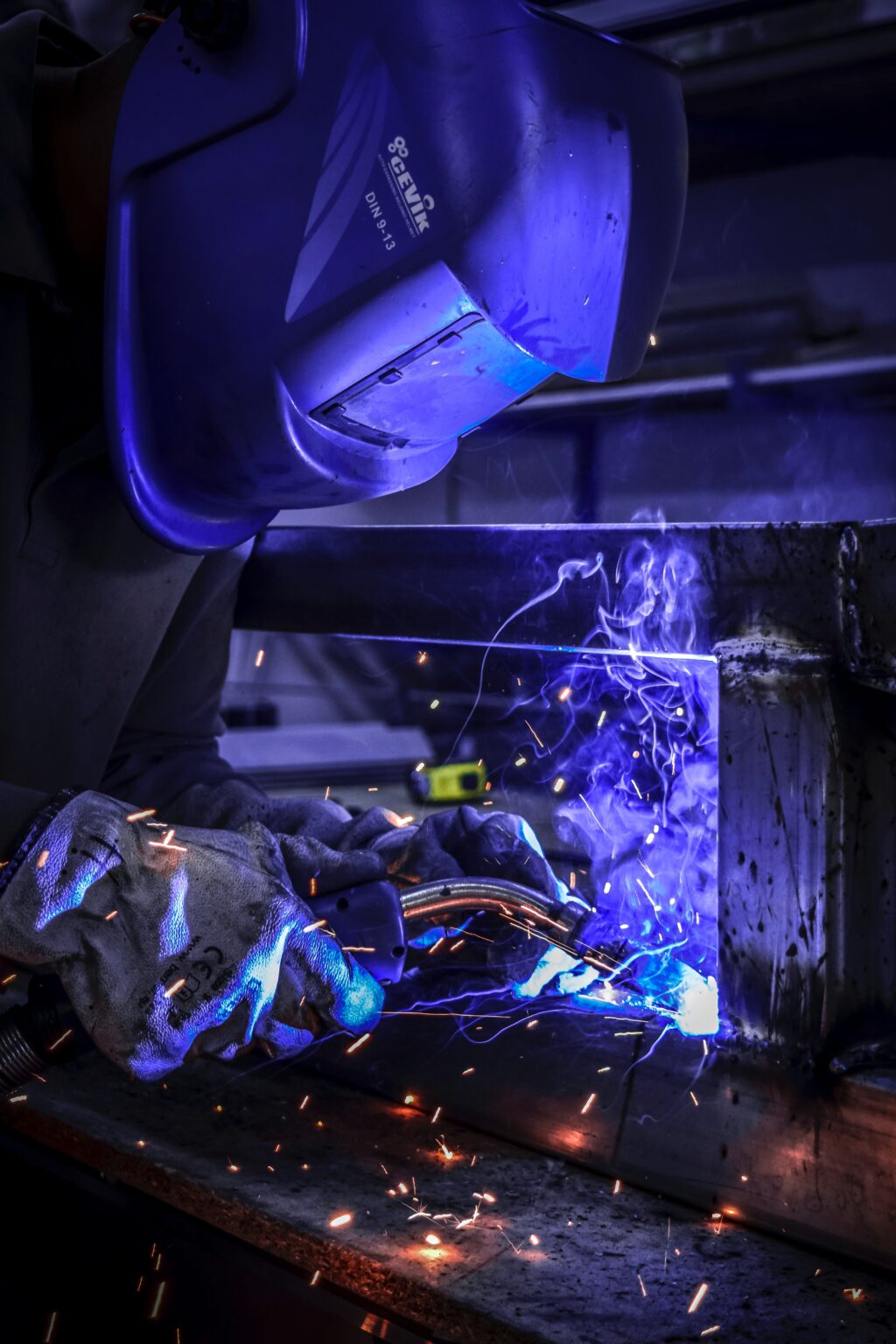
How MIG Welding Fume Extraction Can Improve Your Health and Safety
MIG welding is a common and versatile welding process that involves feeding a continuous wire electrode through a welding gun and creating an arc between the wire and the metal workpiece. MIG welding can produce high-quality welds on various metals and alloys, but it also generates harmful fumes and smoke that can pose serious health and safety risks to welders and workers.
In this blog post, we will explain what MIG welding fumes are, why they are dangerous, and how MIG welding fume extraction can help you protect your health and safety. We will also provide some tips on how to choose, use, and maintain a MIG welding fume extractor for optimal performance.
The Risks of MIG Welding Fumes
MIG welding fumes are a mixture of solid particles and gases that are formed when the metal, the wire electrode, the shielding gas, and the coatings or contaminants on the metal are heated and vaporized by the electric arc. MIG welding fumes can contain various metals, such as iron, manganese, nickel, chromium, copper, zinc, lead, cadmium, and aluminum, as well as gases, such as carbon monoxide, carbon dioxide, nitrogen oxides, ozone, and phosgene.
Exposure to MIG welding fumes can have both short-term and long-term effects on your health and safety. Some of the common symptoms and consequences of MIG welding fume exposure are:
- Eye irritation, redness, tearing, or burning
- Nose and throat irritation, coughing, sneezing, or soreness
- Respiratory problems, such as asthma, bronchitis, pneumonia, or lung cancer
- Metal fume fever, a flu-like illness characterized by fever, chills, headache, muscle ache, nausea, or vomiting
- Cancer of the lung, larynx, urinary tract, or other organs
- Neurological damage, such as Parkinson’s disease or manganism
- Skin irritation, rash, or dermatitis
- Allergic reactions or sensitization
- Reduced fertility or birth defects
The severity of the health effects depends on several factors, such as the type and concentration of the fumes, the duration and frequency of exposure, the ventilation and air quality in the workplace, the use of personal protective equipment (PPE), and the individual susceptibility of the welder.
The Benefits of MIG Welding Fume Extraction
MIG welding fume extraction is a method of removing fumes and smoke from the welding area by using a device that captures the fumes at or near the source and transports them to a filter unit where they are filtered and cleaned before being discharged or recirculated. MIG welding fume extraction can provide several benefits for your health and safety:
- It reduces your exposure to harmful fumes and gases by capturing them before they reach your breathing zone.
- It improves your visibility and comfort by clearing the air from smoke and dust.
- It protects your skin from contact with hot or toxic particles.
- It prevents the accumulation of fumes in the workplace that can create fire or explosion hazards.
- It enhances your productivity and quality by allowing you to weld more efficiently and accurately.
- It complies with occupational health and safety regulations and standards that limit the permissible exposure levels of welding fumes.
How to Choose a MIG Welding Fume Extractor
There are different types of MIG welding fume extractors available on the market. Some of the factors that you should consider when choosing a suitable MIG welding fume extractor are:
- Size: The size of the fume extractor should match the size of your welding area and workpiece. A larger fume extractor can cover a larger area but may also require more space and power.
- Capacity: The capacity of the fume extractor refers to the amount of air that it can move per unit time. A higher capacity fume extractor can capture more fumes but may also generate more noise.
- Filtration: The fume extractor’s ability to remove gases and particles from the air depends on its filtration system. A good filtration system should have several filter stages that can collect various pollutant sizes and types. Other unique features of some filters could include self-cleaning capabilities or spark arrestors.
- Mobility: The fume extractor’s mobility is defined as how easily it can be moved or positioned in various ways. Changing work locations or angles may be easier with a mobile fume extractor, but it may also require more maintenance.
- Noise: The noise level of the fume extractor depends on its capacity, design, and fan speed. A quieter fume extractor can be more comfortable for the welder and the workers around him or her but may also have a lower performance.
- Cost: The cost of the fume extractor includes the initial purchase price, the operating cost, and the maintenance cost. A cheaper fume extractor may save you money upfront but may also have a lower quality, efficiency, or durability.
You should compare different models and features of MIG welding fume extractors and find the best one that meets your needs and budget.
How to Use a MIG Welding Fume Extractor
Once you have chosen a MIG welding fume extractor, you should follow some best practices and guidelines for using it properly and safely. Here are some tips on how to use a MIG welding fume extractor:
- Position the fume extractor as close as possible to the welding arc, preferably within 6 inches (15 cm). This will ensure that the fumes are captured before they spread or rise.
- Adjust the angle and direction of the fume extractor to avoid interfering with your welding process or vision. You can use a flexible or swivel arm or a magnetic base to achieve this.
- Maintain a constant distance between the fume extractor and the welding arc. If you move too far away, the fume extraction efficiency will decrease. If you move too close, you may block the shielding gas or damage the fume extractor.
- Check and clean the filters regularly according to the manufacturer’s instructions. Clogged or dirty filters can reduce the airflow and filtration efficiency of the fume extractor. You may also need to replace the filters periodically depending on their type and condition.
- Inspect and service the fume extractor periodically according to the manufacturer’s instructions. You should check for any signs of wear, damage, or malfunction of the fume extractor and repair or replace any faulty parts.
Conclusion
MIG welding fume extraction is an essential method of protecting your health and safety from the harmful effects of welding fumes and smoke. By using a suitable MIG welding fume extractor, you can reduce your exposure to hazardous substances, improve your working conditions, and enhance your welding performance. You should choose, use, and maintain your MIG welding fume extractor carefully and responsibly to get the best results.







